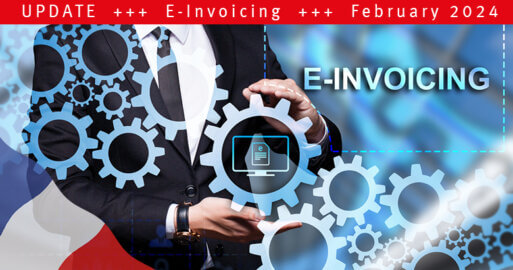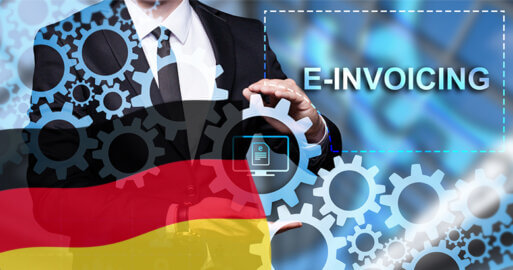How to Prepare for the Key Trends in “Always On” Digital Tax Enforcement

From a Chilean experiment to a global trend…
The digital transformation of tax administrations is not without its challenges for businesses.
Until just over a decade ago, businesses could quite freely adopt digital processes to replace paper and manual procedures with automation. Key documents of interest to tax administrations, such as invoices, could also be dematerialized, but paper ‘originals’ still needed to be issued and stored for compliance purposes. This all started changing in the early 2000s, when countries like Chile started experimenting with ways of re-engineering the traditional VAT compliance picture.
Where some countries or regions – such as the EU – cautiously took the approach that digital invoices may under certain conditions be accepted for VAT compliance purposes, the Chilean experiment has given rise to a LATAM-wide wave of laws that made e-invoicing mandatory, but with a twist: invoices had to be sent to and approved by an online tax administration platform before the invoice could even be issued to the buyer.
Fast forwarding to 2021, we now live in a world where the LATAM experience with mandatory e-invoicing has created a major boost to the digital transformation of tax administrations – to the point that the digital transformation of businesses can in certain circumstances actually be slowed down or reversed if businesses don’t start accepting these tax digitization mandates as revolutionary instead of evolutionary. Today, this revolution revolves around four distinct but interconnected trends:
TREND 1: CONTINUOUS TRANSACTION CONTROLS
Value-Added Tax (VAT) represents a large and rapidly growing part of the total taxes and charges collected by governments around the world. These so-called consumption taxes are theoretically easy to enforce because a significant portion is auditable based on documents and data that companies exchange with each other in the normal course of business. At least, that is the theory: in reality, large chunks of the revenue that governments should collect on each business-to-business and business-to-consumer transaction are not collected. This has several reasons, but the long and short is that auditing businesses is an expensive, inefficient, and thankless task. As mentioned, this is why countries in Latin America invented a radically different mode of enforcement, known as the “clearance model”. Other emerging economies, such as Turkey, followed suit a decade later. Many countries in the Latin American region now have stable CTC systems where a significant amount of the data required for VAT enforcement is based on invoices, and other key data is harvested and pre-approved directly at the time of the transaction. Europe and other countries went through a stage where they allowed original VAT invoices to be electronic, without changing the basics of the VAT law enforcement model. This phase of voluntary e-invoicing without process re-engineering is often referred to as “post audit” e-invoicing – meaning, tax administration audit only comes into play post-transaction. In a post audit system, the tax authority has no operational role in the invoicing process and relies heavily on periodic reports transmitted by the taxpayer. The principal VAT requirement for post audit e-invoicing is that trading partners must demonstrate the integrity and authenticity of their e-invoices from the moment of issue until the end of the mandatory storage period. For invoices issued in electronic format, this often means that some form of electronic signature or other approach must be applied to ensure long-term verifiable evidence. Largely due to the staggering improvements in revenue collection and economic transparency demonstrated by countries with existing CTC regimes, countries in Europe, Asia and Africa have also started moving away from post audit regulation to adopting CTC-inspired approaches. However, this rapid global adoption of CTCs doesn’t follow the same relatively linear path of quick migration as the early adopters – in fact, as this trend spreads around the globe, it’s becoming increasingly clear there will be a rather chaotic transition towards a multiplicity of models.
A considerable number of EU Member States, for example, are moving toward CTCs not by imposing “clearance” e-invoicing but by making existing VAT reporting processes more granular and more frequent via CTC reporting. This approach is partly rooted in legal constraints that make EU Member States reluctant to mandate e-invoicing. These countries will eventually adopt requirements for real-time or near-real-time invoice transmission, as well as electronic transmission of other transaction and accounting data to the tax authority. However, it’s not a foregone conclusion that they’ll all take these regimes to the extreme of invoice clearance. CTC reporting from a pure technical perspective often looks like clearance e-invoicing, but these regimes are separate from invoicing rules and don’t necessarily require the invoice as exchanged between the supplier and the buyer to be electronic. Even when the invoice “report” must be sent to the tax authority in real-time or in near-real time, in such regimes the taxable person doesn’t have to wait for the CTC platform to return an explicit approval of the invoice before further processing the document as a valid invoice for tax purposes.
TREND 2: E-ACCOUNTING INCLUDING SAF-T REQUIREMENTS
Not all business data of interest to tax administrations is transactional in nature – and even in relation to transactional data, tax administrations want to know how the transacting taxable persons treated these transactions from an accounting perspective. Until recently, this need to consult a company’s accounts was met principally through the instrument of on-site audits. Tax administrations have over the past decades developed ever-more sophisticated tools to audit businesses’ ERP and accounting systems to verify the consistency of accounting ledgers, and where necessary to triangulate these with VAT returns and other available information including original invoices and other documents that companies were obligated to store. The general area of ‘e-audit’ has been strongly influenced by the OECD’s Standard Audit File for Tax (SAF-T) specifications and guidelines. SAF-T as a concept was developed from an audit perspective, however many tax administrations are now adopting this guidance as a basis for the proactive or on-demand reporting obligations of accounting ledgers by businesses – thereby expanding the use of SAF-T concepts to ‘e-accounting’. These two approaches are at the extreme ends of a transmission spectrum, however from a data perspective they are not fundamentally different. If data transfer is performed as a ‘push’ report through a predetermined digital channel, it becomes useful to talk about e-accounting as distinct from e-audit requirements, as these usually focus on the ability of taxable persons to export accounting data to a specific format. The reason for this terminological difference is that e-accounting plays an important role in tax administrations’ programs to possess a copy of all relevant business data for audit and tax calculation in their systems at all times. As explained in the OECD documentation around SAF-T, this instrument was designed to aid tax administrations in auditing for both direct (income) and indirect taxes. The SAF-T standard covers the ‘full set’ of business and accounting records commonly held by taxpayers. The standard includes the following datasets: General Ledger; Accounts Receivable (master data and invoices); Accounts Payable (master data, invoices, and payment); Goods movements; Fixed assets; Inventory.
TREND 3: AGGREGATOR LIABILITY
With the introduction of CTCs to all businesses of all sizes – and in a growing number of countries to transactions between small and even occasional or ‘gig economy’ vendors and local consumers – tax administrations are creating a colossal dependency on the availability and performance of their online services to not adversely affect their economies or citizens’ wellbeing.
Network or computer processing problems must be excluded at any cost, and therefore governments will be facing an unprecedented and growing operational challenge. In addition, governments are facing new administrative, process, organizational and backend system challenges as a result of placing VAT reporting and remittance obligations on non-established vendors of goods and services. Consequently, a natural result of a tax administration’s digital transformation journey is a massive need for investment across the board to adequately process, analyze and sometimes approve huge numbers of transactions and reports. To ease this burden, tax administrations have in the past decade started looking for ways to distribute some or all these responsibilities to third parties. The basic principle has generally been to find economic actors who are already natural aggregators of transactions, and which have the scale, technology and organizational strength which make them suitable for either centralizing VAT reporting or CTC platform integration on behalf of the taxable persons in their ‘network’ – or even to take on the processing and approvals of such business data on the tax administration’s behalf. Sometimes this transfer of operational and legal responsibility is voluntary – as is the case with so-called ‘PACs’ in Mexico and countries that have modelled their CTC approach on that – and sometimes it’s not. Key examples of a transfer of reporting and payment liability are in the area of B2C marketplaces, for which both US States and the European Union have made significant changes to their VAT legislation.
TREND 4: DESTINATION TAXABILITY FOR CROSS-BORDER B2C
In the old world of paper-based trade and commerce, the enforcement of tax borders, between or within countries, was mostly a matter of physical customs controls. Many countries have for reasons of trade facilitation and resource optimization historically applied ‘de minimis’ rules, which are specific limits below which imported goods were exempted from VAT.
Cross-border services, which could not, or not easily, be checked at the border, would often escape VAT collection altogether or be taxed in the country of the service provider. With the very large increases in volume of cross-border trade in low-value goods and cross-border digital services over the past decade, tax administrations have started taking significant measures to tax such supplies in the country of consumption/destination. Since the 2015 publication of the OECD/G20’s Base Erosion and Profit Shifting (BEPS) Project Action 1 Report on Addressing the Tax Challenges of the Digital Economy, most OECD and G20 countries have adopted rules for the VAT treatment of business-to-consumer (B2C) digital/ electronic supplies by foreign suppliers. Many industrialized and emerging countries have since passed laws based on this OECD guidance; most apply to B2C transactions only, although some of these jurisdictions have imposed obligations that apply or could apply to both B2B and B2C transactions.
IMPACT ANALYSIS
On a high level, businesses should consider the following profound impacts of the tax digitization trends and the associated paradigm shift discussed above:
- Data Quality Becomes Business-Critical – As CTCs take hold around the world, companies will find that their supply and demand chains may be increasingly impacted due to errors in the mandatory tax content or file formats of CTC documents. Many businesses have built up a certain tolerance to inaccuracies in invoice content, but as tax administrations expand the controls that they apply to CTC data, they will be withholding clearance approval from more invoices. Consequently, it becomes critical for businesses to work on getting tax content, rates, and technical formats strictly right.
- Point Solutions are an Insidious Poison for your Business – Many companies with multinational business processes have in the past years treated VAT digitization trends as evolutionary, allowing subsidiaries to purchase compliant solutions for their local CTC mandates. By extending the legacy concept of decentralized VAT compliance assurance to the world of mandatory e-invoicing and continuous compliance, such subsidiaries will increasingly adopt disparate local technologies and vendors for core trading partner and e-invoicing processes. This will make it impossible for companies to benefit from the cloud-based transaction platforms they want to roll out globally to benefit from company-wide management dashboards as well as spend management and financing options. Keeping to a decentralized VAT compliance approach will feel like business as usual, but in a world where CTCs will soon be the norm, such decentralization could reverse digital and finance transformation and erode a company’s competitive market position.
- Expanding VAT Compliance Footprint – CTCs are all about tax administrations getting access to the real business transaction data close to the moment of the actual transaction. Therefore, the application that actually issues or receives an invoice is often going to be the application that needs to submit the data to the CTC platform for reporting or clearance. This means that many more systems and processes will over time be affected by VAT compliance than has historically been the case. Many more internal departments therefore need to be prepared to manage compliance through the internal and external applications they use for interaction with different types of vendors and customers.
TAX, FINANCE, AND IT NEED TO DRIVE A COHERENT STRATEGY
It is important that tax – specifically VAT – professionals team up with IT and finance executives to build a corporation-wide strategy to weather the tax digitization storm. A good strategy to turn the global CTC trend to your strategic advantage requires excellent insight into applicable and upcoming CTC mandates, as well as a shared understanding across the company of systems and processes that are or will soon be affected by the trends described above in this article.
Webcast-On-Demand
Learn more how VAT Compliance will Transform Your Business Post-Covid19!
Thank you for your message
We appreciate your interest in SEEBURGER
Get in contact with us:
Please enter details about your project in the message section so we can direct your inquiry to the right consultant.
Written by: Christiaan Van Der Valk
Christiaan Van Der Valk is VP, Strategy and Regulatory at Sovos. He is an internationally recognised voice on e-business strategy, legal, policy, best practice and commercial issues. Over the past 20 years, Christiaan has presented at and authored several key papers for high-level international meetings at the OECD, European institutions, the Asia Europe Meeting, World Trade Organisation and several other UN agencies. Christiaan is a dual French and Dutch citizen and an amateur oil painter in his scarce free time.





